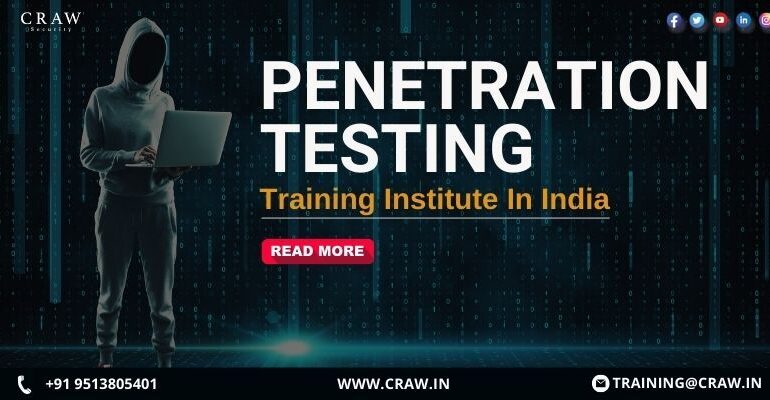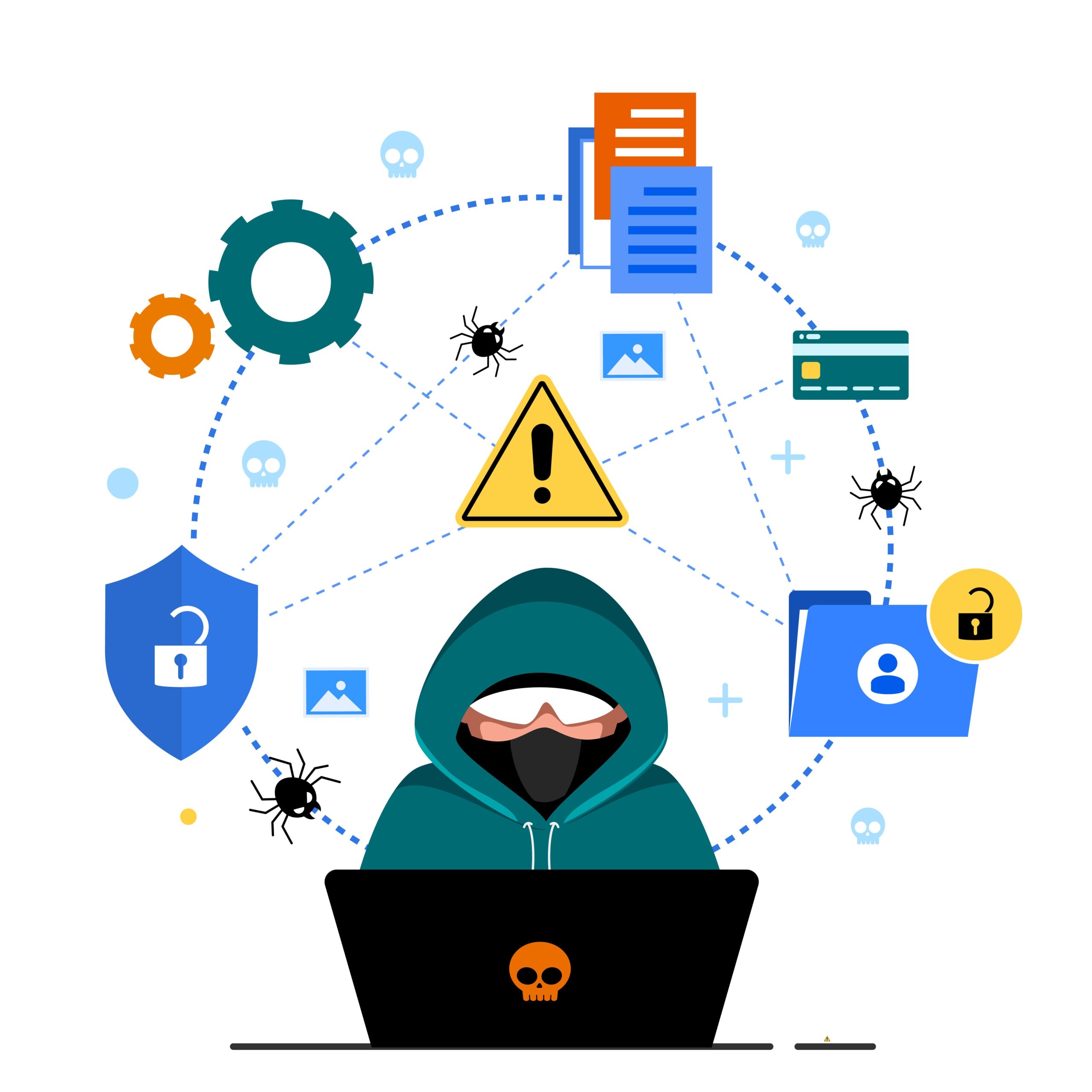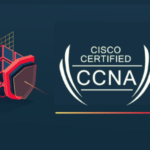Penetration Testing Training Institute In India

Penetration Testing Training Institute In India
Penetration Testing Training Institute
In this article, you will learn about some of the reputed “Penetration Testing Training Institutes in India, that are offering training & certification for beginners and IT professionals who want to learn penetration testing skills.
Organizations need professionals in penetration testing to find any security issues in their security infrastructure. If you want to become a professional pentester as well, this article is just for you. What are we waiting for? Let’s continue!
Importance of Penetration Testing in Cybersecurity
| S.No. | Factors | Why? |
| 1. | Identifying Vulnerabilities | Penetration testing is essential for identifying gaps in the network infrastructure, applications, or system design of a system, enabling enterprises to proactively fix and reduce security threats. |
| 2. | Risk Mitigation | Penetration testing helps organizations determine their level of risk exposure and prioritize security measures to successfully safeguard sensitive data and important systems by simulating real-world cyberattacks. |
| 3. | Compliance Assurance | Regular penetration testing is mandated by numerous sectors and regulatory frameworks to verify adherence to security requirements.
This shows a company’s dedication to data protection, which helps them stay out of legal hot water and gain the trust of their clients. |
| 4. | Enhancing Incident Response | Penetration testing offers important information about how successfully a company can identify and handle security events.
This strengthens the overall cybersecurity posture and makes it possible to improve incident response plans. |
| 5. | Securing Customer Trust | Conveying a dedication to cybersecurity by conducting periodic penetration tests fosters confidence among stakeholders, partners, and customers.
It reassures consumers that the company takes aggressive measures to protect sensitive data and their personal information. |
| 6. | Preventing Data Breaches | Penetration testing lessens the possibility of data breaches and the resulting financial and reputational harm by detecting and fixing vulnerabilities before bad actors can take advantage of them. |
| 7. | Understanding Attack Paths | Penetration testing assists companies in understanding the many routes that attackers could take to compromise systems through the use of simulated attacks.
This information is crucial for enhancing defenses and putting in place efficient security measures. |
| 8. | Staying Ahead of Evolving Threats | Because cyber threats are ever-changing, penetration testing offers a proactive way to keep up with new attack routes.
This guarantees that defenses against the most recent cyber threats are always updated. |
| 9. | Cost-Effective Security Improvement | One affordable method of finding and addressing security flaws before they can be exploited is to regularly invest in penetration testing.
Proactive security measures come at a significantly lower cost than the consequences of a data breach or system penetration. |
| 10. | Continuous Improvement | The process of penetration testing is continuous and adjusts to the ever-changing threat landscape. It is not a one-time event.
Organizations that regularly test their systems are better able to maintain a strong cybersecurity posture, adjust to new threats, and improve their security protocols. |
Understanding Penetration Testing
Defining Penetration Testing and Its Scope
To find vulnerabilities and flaws in computer systems, networks, or applications, penetration testing is a proactive cybersecurity strategy that uses simulated attacks. Penetration testers also referred to as ethical hackers, use a variety of techniques to imitate actual cyber threats.
By doing so, they give organizations important information about how to strengthen their security protocols and reduce possible dangers. Finding and fixing vulnerabilities before bad actors take advantage of them is the aim.
India’s penetration testing market is predicted to grow dramatically in 2024 as businesses prioritize cybersecurity to counteract emerging cyber threats. Demand for qualified penetration testers will increase across industries, including e-commerce, healthcare, and finance, as digital transformation projects increase.
The Indian market for penetration testing services is expected to witness substantial expansion in the next years due to government regulations and increased awareness of cybersecurity dangers.

Types of Penetration Testing Methods
- Black Box Testing:
The tester uses this procedure without any prior knowledge of the target system. It attempts to find vulnerabilities and weaknesses through active investigation, simulating a real-world scenario where the attacker has limited knowledge.
- White Box Testing:
This technique—also referred to as clear-box or glass-box testing—involves having a thorough understanding of the internal operations of the target system.
Testers make use of this data to find weaknesses, evaluate the quality of the code, and guarantee thorough coverage of security evaluations.
- Gray Box Testing:
Gray box testing incorporates aspects of both white box and black box testing, requiring some understanding of the target system.
In order to provide a balanced approach to vulnerability assessment, testers imitate an insider or a user with some level of access using a limited quantity of information.
- External Testing:
This focuses on assessing the security of systems that are visible to the outside world, like servers or webpages that are reachable via the internet.
Finding weaknesses that hostile outside parties might use to obtain unauthorized access is the aim.
- Internal Testing:
Through the simulation of an insider’s threat from having access to the organization’s network, internal penetration testing evaluates the security of internal network systems.
This aids in locating holes and weak points that workers or other reliable parties might take advantage of.
- Web Application Testing:
With this technique, vulnerabilities such as SQL injection, cross-site scripting, and improper authentication are especially targeted at web applications. It guards against frequent online attacks and guarantees the security of web-based services.
- Network Services Testing:
This approach, which is centered on evaluating the security of network infrastructure, looks for weaknesses in firewalls, switches, routers, and other network equipment that an attacker could use to obtain unauthorized access or interfere with services.
- Social Engineering Testing:
With this approach, the human element of security is evaluated through the imitation of several social engineering attacks, such as phishing or impersonation.
It aids in the understanding and fortification of an organization’s defenses against deceit and manipulation.
- Wireless Network Testing:
This technique evaluates wireless network security by finding weaknesses in Wi-Fi networks and associated protocols.
The goal of testers is to guarantee the integrity and privacy of wireless communications inside a company.
- Physical Penetration Testing:
This entails evaluating an organization’s physical security, including its buildings, data centers, and workforce.
Testers use physical assaults from the real world to find gaps in monitoring, access controls, and other security procedures.

Choosing the Right Institute
Criteria for Selecting a Top Penetration Testing Training Institute
| S.No. | Factors | What? |
| 1. | Accreditation and Certification | Select a penetration testing training program from a reputable and accredited institution in the cybersecurity field.
To make sure the curriculum satisfies industry requirements, look for credentials like the Offensive Security Certified Professional (OSCP) or the Certified Ethical Hacker (CEH) from EC-Council. |
| 2. | Experienced Instructors | Make sure the school hires qualified, experienced teachers with a lot of penetration testing experience.
Practical comments from instructors with real-world expertise improve the training’s quality and its applicability to business procedures. |
| 3. | Hands-On Practical Training | Select a training course that has a strong emphasis on practical, hands-on instruction as well as real-world circumstances.
The development of the skills necessary for penetration testing requires practical experience, and a reputable training facility should offer a lab setting for in-person training. |
| 4. | Up-to-Date Content | Because the world of cybersecurity is constantly changing, it’s critical to choose a training facility that keeps its curriculum up to date with the newest technologies, methods, and vulnerabilities.
Make sure the course material covers new cyberthreats and is in line with industry trends. |
| 5. | Placement Assistance and Networking Opportunities | Choose an institution that helps with job placement or arranges for industry professional networking.
Having a solid industry network can help you land a job once you’ve finished your training and offer invaluable career support. |
Geographic Considerations: Finding Institutes Across India
The following geographic factors should be taken into account when searching for penetration testing centers around India:
- Metros and IT Hubs: Investigate big cities with flourishing IT sectors, such as Hyderabad, Bengaluru, Bengaluru, Pune, and Mumbai.
Because of the concentration of technological businesses and the need for cybersecurity personnel, these locations frequently house respectable schools and training centers that offer penetration testing courses.
- Educational Clusters: Investigate areas with well-established educational clusters, such as towns or cities that emphasize technology and IT education.
There may be educational institutions or training facilities in these regions that offer specific cybersecurity courses, such as penetration testing.
- Online Platforms: Think of online learning environments that serve people all around India.
Online courses are a convenient way for individuals from different places to receive high-quality cybersecurity training from numerous respectable cybersecurity training organizations.
- Industry Collaboration: Investigate areas where industry players and educational institutions work closely together.
These kinds of partnerships may result in the creation of educational programs and training facilities aimed at generating qualified cybersecurity specialists, including penetration testers.
Accreditation and Recognition of Institutes
Accreditation and recognition are crucial factors when evaluating cybersecurity institutes:
- Industry-Recognized Certifications: Look for schools that provide courses that correspond with popular certifications such as CompTIA Security+, Offensive Security Certified Professional (OSCP), or Certified Ethical Hacker (CEH).
These accreditations attest to the institute’s programs’ excellence and applicability in the cybersecurity sector.
- Affiliation with Professional Bodies: Seek out educational institutions connected to reputable associations or professional groups for cybersecurity.
Membership in groups like CompTIA, ISC2, or EC-Council can be used to gauge an organization’s dedication to best practices and industry standards.
- Employer Recognition and Placement: Think about universities with a solid reputation with cybersecurity employers.
Schools that have a track record of placing their alumni in respectable sector positions provide tangible evidence that their training initiatives are effective.
Curriculum Insights
Core Components of Penetration Testing Training
- Ethical Hacking Fundamentals:
Students understand the rules of engagement and ethical issues in penetration testing by comprehending the ethical and legal aspects of hacking.
This fundamental understanding guarantees an ethical and legal method of locating and fixing security flaws.
- Networking Basics:
Students who receive in-depth instruction on network design, protocols, and vulnerabilities are better prepared to evaluate and safeguard network infrastructure.
Practical knowledge of network traffic analysis, vulnerability detection, and security measure implementation to prevent unwanted access are included in this.
- Web Application Security:
A thorough examination of techniques for testing and safeguarding web-based systems, secure coding standards, and vulnerabilities in web applications.
Students become proficient in spotting and removing typical security flaws including SQL injection and cross-site scripting (XSS).
- Operating System Security:
Grasp the security features of popular operating systems, including Windows, Linux, and macOS.
To stop illegal access and data breaches, students learn how to secure operating systems using procedures like correct configuration, patch management, and user privilege controls.
- Wireless Network Security:
To evaluate and secure wireless communication, students study encryption algorithms and weaknesses in wireless networks.
Techniques for recognizing and reducing Wi-Fi network threats are covered in the training, guaranteeing the strength of wireless security setups.
Hands-On Experience: The Key to Effective Learning
- Lab Exercises:
Through hands-on lab exercises, students can reinforce their knowledge in a safe atmosphere by applying theoretical principles in real-world situations.
By simulating real-world situations, these activities improve the technical know-how and problem-solving skills necessary for successful penetration testing.
- Capture The Flag (CTF) Challenges:
- Students can reinforce their knowledge in a safe atmosphere by applying theoretical principles in real-world situations through hands-on lab exercises.
By simulating real-world situations, these activities improve the technical know-how and problem-solving skills necessary for successful penetration testing.
- Real-World Simulations:
Students can experience real-world penetration testing scenarios through the use of simulated settings, which serve as a link between theoretical knowledge and hands-on training.
By simulating the intricacy of real-world systems, these simulations help students become ready for real-world cybersecurity challenges by letting them find and exploit weaknesses in a safe environment.
- Penetration Testing Tools:
Through the practical application of industry-standard tools like Metasploit, Wireshark, and Burp Suite, students can become acquainted with the tools that are frequently utilized in penetration testing.
Technical expertise is improved by hands-on practice with these tools, which empowers students to do comprehensive assessments, recognize vulnerabilities, and implement suitable security solutions in real-world scenarios.
Advanced Modules in Penetration Testing
- Advanced Network Exploitation Techniques:
This session covers advanced attack vectors like pivoting and lateral movement as it dives into complex network exploitation techniques.
Pupils have a comprehensive understanding of locating and taking advantage of vulnerabilities at a high level, equipping them to tackle challenging cybersecurity problems.
- Cloud Security:
This session, which focuses on cloud environment security, covers the particular difficulties that come with AWS, Azure, and Google Cloud.
Students acquire cutting-edge methods for evaluating and improving cloud-based infrastructure security, guaranteeing the safety of data and services within cloud ecosystems.
- Mobile Application Security:
Students who receive advanced training in mobile application security are better able to recognize and address security threats on both the iOS and Android platforms.
Reverse engineering, secure coding techniques, and the efficient evaluation of mobile app vulnerabilities are all covered in this lesson.
- IoT Security:
This lesson is an exploration of the security issues related to Internet of Things (IoT) devices and protocols.
To address vulnerabilities in networks and devices that are connected, students study sophisticated techniques for evaluating and securing IoT ecosystems.
- Red Team Operations:
The Red Team Operations module mimics threat actor tactics, methods, and procedures (TTPs) by simulating sophisticated attacks.
Through extensive red teaming exercises, students hone their hostile simulation skills to evaluate an organization’s entire security posture and pinpoint vulnerabilities that might be missed in more conventional testing.
Faculty and Expertise
Importance of Experienced Instructors
Because they offer real-world scenarios, industry best practices, and practical insights to the classroom, experienced teachers are essential to penetration testing training. Their experience improves the educational process and gives students important information and abilities that are necessary for safe and efficient cybersecurity procedures.
Profiles of Leading Penetration Testing Educators in India
- Mohit Yadav:
He is the founder of a reputed cyber security training and certification-providing company “Craw Security” and a professional cyber security expert in India.
Moreover, he has started his campaign of teaching the youth of India and outside india to become a professional in cyber security.
- Sunny Vaghela:
Sunny Vaghela is a well-known cybersecurity expert with more than ten years of expertise. He founded TechDefence, a top cybersecurity training organization. Digital forensics, penetration testing, and ethical hacking are among his areas of competence.
- Rizwan Shaikh:
i3indya Technologies’ creator and certified ethical hacker, Rizwan Shaikh, is well-known in the Indian cybersecurity education community.
His vast experience includes facilitating training sessions, seminars, and workshops on ethical hacking and penetration testing.
- Arun Kumar Ponnusamy:
At G7CR Technologies, Arun Kumar serves as the Chief Information Security Officer and is well-known for his proficiency in penetration testing and other areas of cybersecurity.
He has solid experience in ethical hacking and has led workshops and training programs that have helped cybersecurity professionals advance.
Certification and Career Prospects in Penetration Testing
Certifications Offered by Institutes in India
Credible schools in India provide credentials like the Certified Information Systems Security Professional (CISSP), the Certified Ethical Hacker (CEH), and the Offensive Security Certified Professional (OSCP) that are in line with industry standards.
The abilities and information acquired during penetration testing training are validated by these certifications.
Career Opportunities Post-Certification in India
Indian nationals can work as penetration testers, ethical hackers, security consultants, or cybersecurity analysts after earning their certification.
To bolster their cybersecurity defenses, businesses across a range of industries, including IT, banking, and healthcare, are looking for trained individuals.
Industry Demands and Job Market Trends in India
- The growing awareness of cybersecurity dangers in India is driving up demand for qualified penetration testers.
To strengthen their cybersecurity strategy, organizations are actively seeking out experts with credentials, which is fueling the growth of the cybersecurity employment market.
- In India’s cybersecurity employment market, specialized fields like cloud security, mobile application security, and Internet of Things security are in more demand due to changing business trends and the threat landscape.
Infrastructure and Resources
Technological Infrastructure at Leading Institutes
- Reputable institutions make investments in cutting-edge technology infrastructure, giving students access to modern computer facilities, dedicated cybersecurity labs, and high-speed internet.
- The infrastructure incorporates cutting-edge networking hardware, virtualization software, and secure settings to replicate real-world conditions and provide hands-on penetration testing training.
Access to Resources and Tools for Students
- Prominent educational establishments guarantee their pupils have access to an extensive array of electronic resources, such as online discussion boards, e-books, and video lectures, all of which augment the educational process.
- Industry-standard penetration testing tools including Burp Suite, Wireshark, and Metasploit are available. Students can develop practical knowledge in a controlled setting through hands-on practice made possible by virtual labs and sandbox environments.
Online vs. Offline Training
Comparing Online and Traditional Classroom Learning
- Flexibility:
- Online Learning: Gives schedule flexibility and lets students access the materials from any location with an internet connection, at their speed.
- Traditional Classroom Learning: Has a set timetable and demands physical presence, which could be difficult for people who have hectic schedules or are limited by distance.
- Interactivity
- Online Learning: Makes use of forums, virtual labs, and interactive tools to actively involve students. Group projects and online discussions are common venues for collaboration.
- Traditional Classroom Learning: Involves in-person contact with peers and instructors, which fosters quick feedback and a stronger feeling of community.
- Cost:
- Online Learning: Usually more affordable since it doesn’t need to pay for travel, lodging, or tangible supplies. A range of price structures, including free and paid ones, may be available for online courses.
- Traditional Classroom Learning: Involves extra expenses for travel, lodging, and occasionally higher tuition. Higher costs could also result from the use of tangible items like textbooks.
- Access to Resources:
- Online Learning: Provides a large selection of digital resources, such as e-books, films, and virtual labs. To accommodate various learning styles, students have access to a wide range of materials.
- Traditional Classroom Learning: Frequently uses in-person seminars and materials. In contrast to the abundance of digital resources accessible online, access to other materials could be restricted.
Personalization
- Online Learning: Enables learners to focus on certain areas of interest or revisit knowledge as needed by providing tailored learning paths. Individual progress can be catered for in material by adaptive learning solutions.
- Traditional Classroom Learning: Adheres to a set curriculum and offers few chances for individualized instruction. Instructors frequently control the pace, which may cause some students to fall behind or not challenge others.
Benefits of Online Penetration Testing Training
- Flexibility and Accessibility: Online penetration testing training gives schedule flexibility, enabling learners to study whenever and wherever they choose.
Diverse learners, such as working professionals looking to advance their skills without interfering with their daily routines, are catered to by this accessibility.
- Cost-Effective Learning: Online training is a financially advantageous choice because it does not require travel or lodging costs.
High-quality penetration testing courses are available to individuals without adding to the cost of traditional in-person training.
- Real-world Simulations: Practical laboratories and simulations that mimic actual penetration testing situations are offered in a lot of online courses.
Through this hands-on experience, students may put their theoretical knowledge into practice in a supervised setting, improving their abilities and getting them ready for real-world cybersecurity problems.
- Diverse Learning Resources: A range of multimedia materials, such as interactive tests, video lectures, and discussion forums, are frequently available on online platforms.
This varied collection of resources accommodates various learning preferences and guarantees a thorough comprehension of penetration testing principles.
- Global Networking Opportunities: People can interact with a worldwide network of cybersecurity specialists and professionals through online training.
In the subject of cybersecurity, networking opportunities via online forums and discussion groups promote knowledge sharing, teamwork, and exposure to various viewpoints.
Admission Process
Guidelines for Admission
If you find yourself in doubt, you can get in contact with Craw Security by reaching the following contact details:
- Email: training@craw.in
- Contact No: +91 95138 05401
These contact details will help you to contact our consultants who will explain to you the training course and the schedule of the course. Craw Security is offering one of the best courses for pentesting which is “Advanced Penetration Testing Course Training in Delhi.”
This course is specially designed under the supervision of professionals in pentesting. After joining the course you will be able to test your knowledge & skills in the virtual labs introduced by Craw Security. What are you waiting for? Contact, Now!
Frequently Asked Questions
About Penetration Testing Training Institute In India
- What are the prerequisites for enrolling in a penetration testing training program in India?
Enrolling in an Indian penetration testing training program usually requires a working grasp of operating systems and cybersecurity principles in addition to a basic comprehension of networking concepts.
Additionally, some programs could demand that participants have a basic understanding of programming and ethical hacking.
- How long does a typical penetration testing course last in Indian institutes?
It differs according to the syllabus that the training & certification program offers to the students who want to learn penetration testing skills under the guidance of professionals working for years in the IT Sector while offering pentesting services to companies.
If you get in contact with Craw Security, you can start your career in the IT Sector as a professional pentester. What are you waiting for? Find more now!
- Are online penetration testing training programs as effective as offline ones?
Yes, moreover, if you get in contact with Craw Security, you can even set the schedule of your online session for “Advanced Penetration Testing Course Training in Delhi” according to your needs. What are you waiting for? Contact, Now!
- How does penetration testing training prepare me for a career in cybersecurity?
Penetration testing training can prepare you for a career with the following factors:
- Technical Proficiency,
- Real-World Simulation,
- Ethical Hacking Skills,
- Comprehensive Understanding, and
- Industry-Recognized Certifications.
- Are there any financial aid options available for students in India?
Grants, scholarships, and student loans from public, corporate, and financial entities are available in India for learning penetration testing. Furthermore, some cybersecurity organizations and training centers could offer discounts or other support to worthy students.















